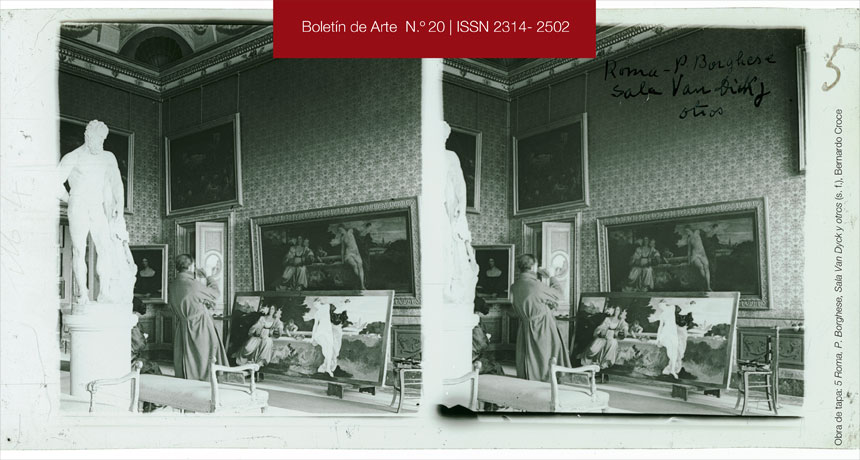Las pinturas de cine de Edward Hopper
Nostalgia del palacio de cine, desilusión del acomodador y amenazas de bomba
DOI:
https://doi.org/10.24215/23142502e023Palabras clave:
Edward Hopper, palacios de cine, pintura y cine, acomodador, arte estadounidenseResumen
Edward Hopper —muy conocido por sus composiciones artísticas que evocan típicas escenas de películas y que han inspirado a muchos cineastas— frecuentaba el cine muy a menudo y empleaba los exteriores e interiores del cine como tema principal de algunas de sus obras. A continuación, se analizarán tres obras icónicas sobre cines de Edward Hopper: The Sheridan Theatre (1937), The Circle Theatre (1936), and New York Movie (1939), cuyo contexto histórico aún no se ha examinado en detalle. Sus composiciones son muy sofisticadas e ilustrativas al mostrar la historia del cine y de la historia estadounidense de la década de 1930. Hopper llama la atención sobre los problemas urbanos contemporáneos sobre la inquietud por las estrategias de abaratamiento en el negocio de exhibición de películas. También muestra las experiencias cambiantes del cine en la década de 1930 y deconstruye el glamour del trabajo del acomodador y expone la alienación de su trabajo.Descargas
Citas
Allan, S. (2019). Faux Frère: Manet and the Salon, 1879-82. In S. Allan et al. (Eds.), Manet and Modern Beauty. The Artistʼs Last Years (pp. 15-42). Los Angeles, United States: Getty Publications.
Anonymous. (1922). The Sheridan Theatre, New York. Architecture and Building, 54(2), 18-19.
Ballin, H. (1921). Jane Eyre [Film].
Balogh, E. (2017). Stars in the Aisles: Cinema usherettes, identity and ideology. Participations. Journal of Audience & Reception Studies, 14(1), 22-48.
Berkow, I. G. (1996). Edward Hopper. An American Master. New York, United States: Smithmark.
Bomb 2 Columbus Circle, N. Y., Film Theatres; Labor? (1935, August 14). Variety, p. 19.
Brooks, M. W. (1997). Subway City: Riding the Trains, Reading New York. New Brunswick, Canada / London, United Kingdom: Rutgers University Press.
Butsch, R. (2001). American Movie Audiences of the 1930s. International Labor and Working-Class History, 59(59), 106-120.
Clark, T. J. (1986). The Painting of Modern Life: Paris in the Art of Manet and his Followers. New York, United States: Alfred A. Knopf.
Doss, E. (2015). Hopper’s Cool: Modernism and Emotional Restraint. American Art, 29(3), 2-27. Retrieved from https://www.jstor.org/stable/10.1086/684918?seq=1
E. B. Lewis is dead, dairy executive. (1936, September 21). The New York Times, p. 23.
Foster, C. E. et al. (2008). Western Motel: Edward Hopper and Contemporary Art. Nürnberg, Germany: Verlag für moderne Kunst.
Foster, C. E. (2013). Hopper Drawing. New York, United States: Whitney Museum of American Art.
Gembara, S. (2015). New York City’s red and green lights: a brief look back in time. Campbell, United States: FastPencil.
Hathaway, H. (1936). Go West Young Man [Film]. United States: Emanuel Cohen Productions
Hereʼs candidate for youngest exhibitorʼs title, started at 17. (1927, August 13). Exhibitors Herald, p. 18.
Inside Stuff - Legit. (1934, October 16). Variety, p. 54.
Kuhn, A. (1985). The power of the image. London, United Kingdom: Routledge.
Levin, G. (1995). Edward Hopper: An Intimate Biography. New York, United States: Alfred A. Knopf.
Managers round table club. (1930, November 29). Motion Picture News, p. 61.
McShane, C. (1999). The Origins and Globalization of Traffic Control Signals. Journal of Urban History, 25(3), 397-404. Retrieved from https://journals.sagepub.com/doi/abs/10.1177/009614429902500304
Melnick, R. (2012). American Showman. Samuel «Roxy» Rothafel and the Birth of the Entertainment Industry, 1908–1935. New York, United States: Columbia University Press.
Movie Operator Uses Screen For Plea to People. (1937, July 31). The Christian Science Monitor, p. 1.
Pleasing Varied Cosmopolitan Tastes. (1922, February 25). Exhibitorʼs Trade Review, p. 909.
Rhodes, G. D. (2012). The Perils of Moviegoing in America 1896–1950. New York, United States / London, United Kingdom: Continuum.
Rühse, V. (2013). «Dies wunderbare Gemählde». Ästhetische und kunstpolitische Aspekte in Texten von Clemens Brentano, Achim von Arnim und Heinrich von Kleist zu Caspar David Friedrichs Landschaftsgemälde «Mönch am Meer». In G. Blamberger et al (Eds.), Kleist-Jahrbuch 2013 (pp. 238-255). Stuttgart, Germany: J. B. Metzler.
Schneider, D. B. (2000, March 19). F. Y. I. The New York Times, p. CY 2.
Silberman, R. (2002). Hopper and the theater of the mind. Vision, spectacle, and the spectator. In P. McDonnell (Ed.), On the edge of your seat: popular theater and film in early twentiethcentury American art (pp. 137-155). New Haven, United States: Yale University Press.
Strand, M. (2001). Hopper. New York, United States: Alfred A. Knopf.
The Quill. (1921, October). The Quill, p. 23.
Traffic Lights Increased, City to Install 250 New Signals With WPA Cooperation. (1936, April 17). The New York Times, p. 23.
van Hoogstraten, N. (1997). Lost Broadway Theatres. New York, United States: Princeton Architectural Press.
Walkout averted in operator dispute. (1935, August 17). Motion Picture Herald, p. 32.
Watts, J. (2003). Mae West. An Icon in Black and White. New York, United States: Oxford University Press.
Wyler, W. (1935). The Good Fairy [Film]. United States: Universal Pictures.
Descargas
Publicado
Cómo citar
Número
Sección
Licencia
Acorde a estos términos, el material se puede compartir (copiar y redistribuir en cualquier medio o formato) y adaptar (remezclar, transformar y crear a partir del material otra obra), siempre que a) se cite la autoría y la fuente original de su publicación (revista y URL de la obra), b) no se use para fines comerciales y c) se mantengan los mismos términos de la licencia.
































